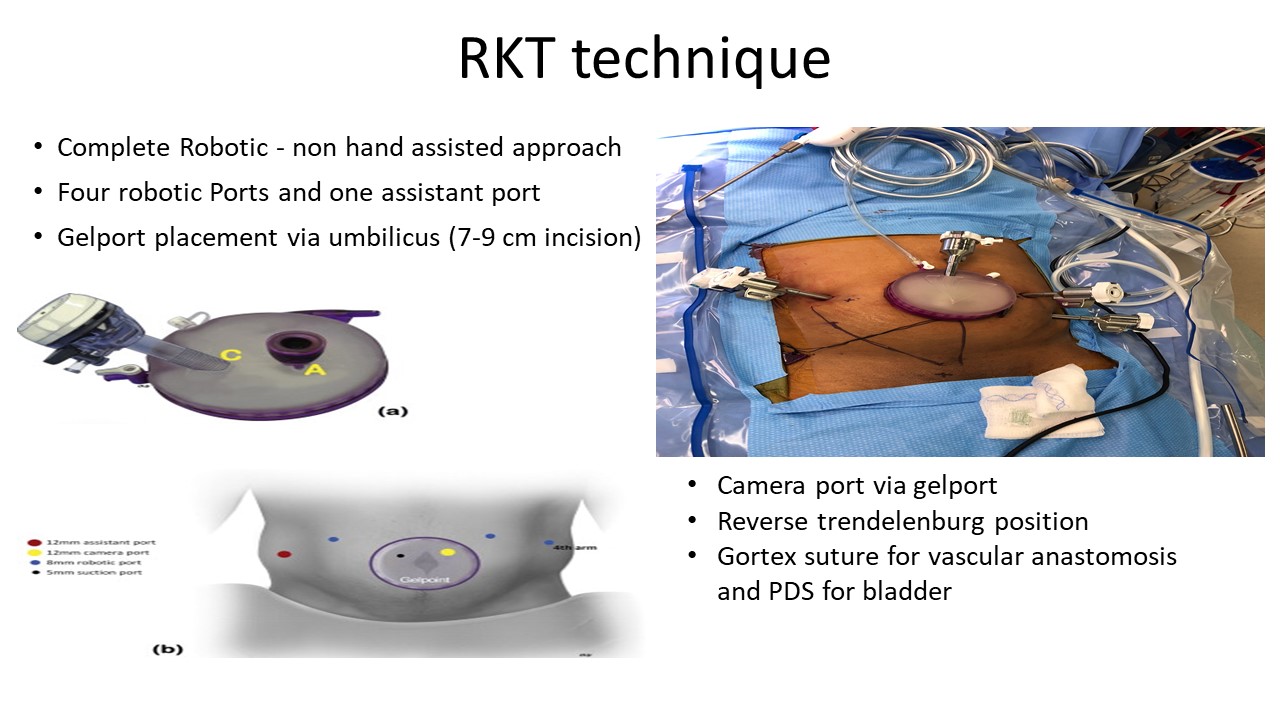Non hand assisted robotic kidney transplantation: the future
Chandra Bhati1, Aamir Khan2, Amit Sharma2, Seung Lee2, Gaurva Gupta2, Dhiren Kumar 2, Marlon Levy2.
1Division of transplantation, University of maryland, Baltimore, MD, United States; 2Division of transplantation, Virginia Commonwealth university , Richmond, VA, United States
Introduction: Robotic-assisted kidney transplantation (RAKT) is a relatively new surgical technique and remains in its infancy. Few transplant centers are currently performing kidney transplants using this approach. Most centers perform RAKT with hand assistance. We report our experience with full robotic technique.
Objective: To assess the technical feasibility, safety and benefits of the non-hand assisted RAKT.
Methods: We retrospectively analyzed all the robotic-assisted kidney transplants performed from June 2018 to August 2021 at VCU health system. Demographic information of donor, recipient, and technical aspects of the surgery, relevant operative times, post-operative course and complications were recorded and analyzed. These patients were also followed for their kidney function as well as the patient and graft survival.
Results: We performed a total of 45 non-hand assisted purely robotic kidney transplants. Majority of them were from live donors 37 (82%). Demographic profile details in table 1. All kidneys were implanted on the right side and 90% of them were retroperitonealized. There were 12 right kidneys and 33 left kidneys.. Three patients required conversion to open because of bleeding from renal vein during attempted retroperitonization and second was converted because of visually pale looking kidney (on conversion kidney was well perfused) and one because of arterial calcification. Most common postoperative complication was hypertension.

| Average age | 40.5 years |
| Average operative time |
300.0±60.5 minutes |
| Median warm ischemia time | 52 (47 – 62 minutes) |
| Median anastomosis time | 40 (26 - 49 minutes) |
| Average blood loss | 208 cc, Median 145 (70-1000 cc) |
| Median hospital stay | 4 days (3-15 days) |
| Mean creatinine at discharge | 2.62±1.96 |
| Mean creatinine at 3 weeks |
1.89±1.08 |
| 1 year Graft survival and Patient survival |
100 %, 100 % |
| Surgical and Medical Complications |
Ureteric twist – required revision of anastomosis Myocardial infarction – drug eluding stent Sub capsular hematoma – laparoscopic drainage Wound infection at PD catheter site |
Conclusions: Non hand assisted RAKT is a technically feasible procedure and a safe surgical alternative to the standard open approach with excellent outcomes.
